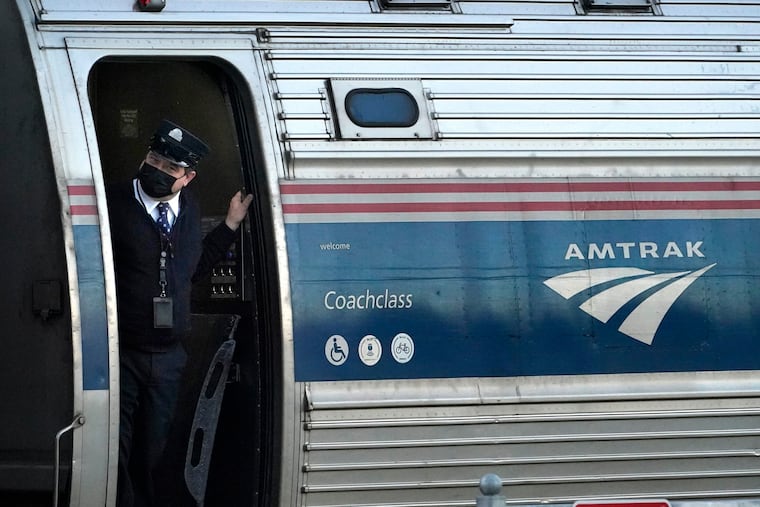2 struck and killed by Amtrak train in Chester
A spokesman for Amtrak said two people had been “trespassing” on the tracks when they were struck by southbound Train 161, shortly after it had left Philadelphia.

Two people were struck and killed by an Amtrak train in Chester on Saturday afternoon, a spokesman for the Delaware County Medical Examiner’s Office said.
No further information about the victims was immediately available.
A spokesman for Amtrak said the two people had been “trespassing” on the tracks when they were struck by southbound Train 161, which had originated in New York and was headed to Washington, at 4:29 p.m.
No injuries to the train’s 368 passengers or crew were reported, Amtrak said in a statement late Saturday night.
Travel along Amtrak’s Northeast Corridor between New York and Washington largely resumed about 6 p.m. with heavy delays. In all, the crash delayed eight other Amtrak trains, the agency said.
But Train 161 still remained stalled at the site of the crash after 8:30 p.m.
Tonia Lee, a wealth management professional from Baltimore, had boarded 161 in Philadelphia, where she had been attending a conference.
“There were a few bumps and the train continued and then stopped,” Lee said of the crash in an email sent from the train.
She said she had learned that the train had struck people by doing a Google search. Information from the train crew was sparse, Lee said. Passengers were sitting in the dark with no updates since power was turned off, she said.
“I’m very saddened to hear of the loss of life,” Lee said.
Train 161 passengers were transferred to another train beginning at 7:45 p.m., Lee said, and the new train departed at 8:30 p.m.
Amtrak referred questions about the victims to the Delaware County Medical Examiner’s Office and local police. Neither had released any additional information by late Saturday night.
The Amtrak statement said incidents such as Saturday’s “serve as critical reminders about the importance of obeying the law and of exercising extreme caution around railroad tracks and crossings,” and cited efforts such as working with Operation Lifesaver to emphasize the dangers of being on railroad property or disregarding warnings at rail crossing.